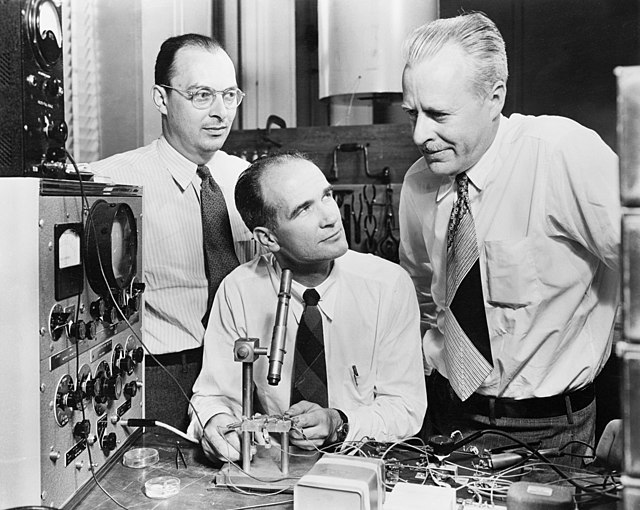A transistor radio is a small portable radio receiver that uses transistor-based circuitry. Following the invention of the transistor in 1947—which revolutionized the field of consumer electronics by introducing small but powerful, convenient hand-held devices—the Regency TR-1 was released in 1954 becoming the first commercial transistor radio. The mass-market success of the smaller and cheaper Sony TR-63, released in 1957, led to the transistor radio becoming the most popular electronic communication device of the 1960s and 1970s. Transistor radios are still commonly used as car radios. Billions of transistor radios are estimated to have been sold worldwide between the 1950s and 2012.
A classic Emerson transistor radio, circa 1958
A seven-transistor Soviet Orljonok radio with the back open, showing parts.
Sanyo 8S-P3 transistor radio, which received AM and shortwave bands.
Regency TR-1.
A transistor is a semiconductor device used to amplify or switch electrical signals and power. It is one of the basic building blocks of modern electronics. It is composed of semiconductor material, usually with at least three terminals for connection to an electronic circuit. A voltage or current applied to one pair of the transistor's terminals controls the current through another pair of terminals. Because the controlled (output) power can be higher than the controlling (input) power, a transistor can amplify a signal. Some transistors are packaged individually, but many more in miniature form are found embedded in integrated circuits. Because transistors are the key active components in practically all modern electronics, many people consider them one of the 20th century's greatest inventions.
Size comparison of bipolar junction transistor packages, including (from left to right): SOT-23, TO-92, TO-126, and TO-3
Julius Edgar Lilienfeld proposed the concept of a field-effect transistor in 1925.
John Bardeen, William Shockley, and Walter Brattain at Bell Labs in 1948; Bardeen and Brattain invented the point-contact transistor in 1947 and Shockley invented the bipolar junction transistor in 1948.
A replica of the first working transistor, a point-contact transistor invented in 1947








